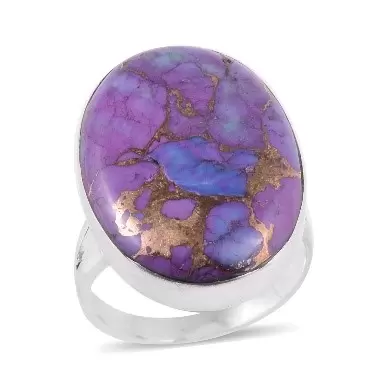GLOSSARY
Alloy
A mix of two or more metals. For example: Rose gold which is primarily a mix of yellow gold and copper.
Antiqued
The process of visually aging the metal by adding a tarnished look. It changes the appearance of the metal in terms of luster. A metal is antiqued by applying a chemical agent.
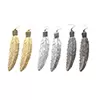
Applique
Affixing decorative materials or metals to another piece of jewelry

Asscher Cut
Similar to an emerald cut, an Asscher-cut stone is a stepped cut gemstone with cropped corners and a flat pavilion. Its overall shape is a square as opposed to the rectangular emerald cut. The length-to-width ratio for an Asscher-cut stone traditionally falls between 1.00 to 1.05. Asscher cut gems are nearly octagonal in shape and feature 58 facets.
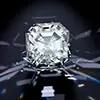
Asterism
Also known as the star effect, asterism is the property of a gemstone to display a star-like reflection on the surface when cut in cabochon.
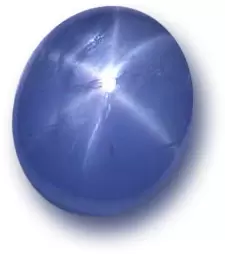
Appraisal
An evaluation of the actual replacement value of a piece of jewelry. This practice is often done by a licensed gemologist.
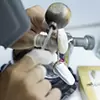
Baguette Cut
Baguette cut stones feature a step-cut with an overall long rectangular shape and cropped corners. Frequently used as an accent stone, the length-to-width ratio is traditionally around 1.5 with 20 facets. This cut is commonly associated with the art deco and art nouveau styles that were at the height of their popularity during the 1920s and 1930s.
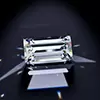
Bail
A jewelry component used to attach a pendant or stone to the necklace or chain.
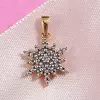
Bangle
It is an inflexible bracelet worn around wrist. These are ring like ornaments, sometimes endless or with a hinged clasp. Bangles are frequently considered traditional and symbolic ornaments in South Asia.
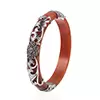
Bead Setting
A type of setting, where a gemstone is set directly into the metal surface using gravers. In the bead setting, gemstones are placed very close to each other and the prongs are very small like, tiny beads themselves. The setting is also known as grain setting or threading.
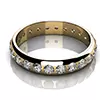
Beryl Gemstone Family
Beryl is the mineral formed with beryllium aluminium cyclosilicate. Beryl in its purest form is a colorless gemstone. However, impurities in beryl gives it many colors. Ranking 7.5-8 on the Mohs scale of hardness, the mineral is found in igneous and metamorphic rocks at different geographic locations around the world. The six primary varieties of beryl include aquamarine, morganite emerald, goshenite, heliodor and red beryl.
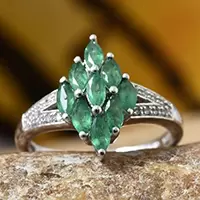
Bezel
A frame, frequently a strip of metal, which secures a stone or watch crystal in place. In gem cutting, bezel may also refer to the sloping facet of a stone that surrounds the larger flat table facet.
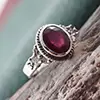
Bleaching Enhancement
An enhancement technique that uses heat, light and/or chemical agents to lighten or remove a gemstone's color that changes its appearance. Abbreviation: B
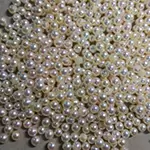
Brilliant Cut
Also known as the diamond cut. This typically conical style cut has numerous kite-shaped and triangular facets arranged in a symmetrical pattern radiating from a large center table facet. Brilliant cut style is used to maximize the amount of light return through the top of the gemstone. This cut typically has 57 facets.
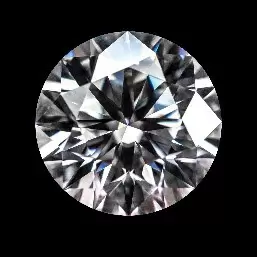
Bubble Inclusion
A microscopic bubble of liquid or gas trapped within a crystal.

Burnish Setting
A setting where the gem is recessed below the metal surface. The surrounding metal is formed around the top of the stone to create a bezel, thus holding the gem in place.
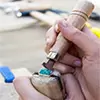
Cabochon Cut
A polished gemstone with a flat bottom and a convex or rounded dome top. Typically applied to opaque stones or gems displaying properties of chatoyancy or asterism.
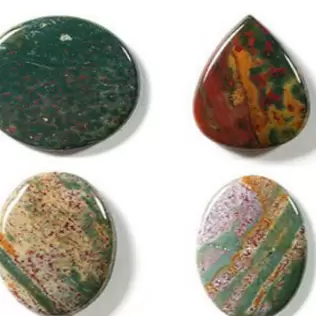
Carat
A unit of measurement based on weight or mass, used for measuring diamonds and pearls. 1 carat = 0.2 grams. Also known as the metric carat. Abbreviation "ct". Carat-weight plays a large role in determining a diamond's value.
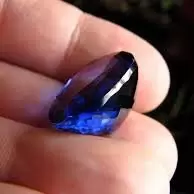
Channel Setting
A setting where the gemstones are suspended between two parallel bars or strips of metal, creating a channel. It is also called as bar setting. It’s an excellent setting for protecting gemstones from being scratched.
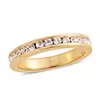
Chatoyancy
The technical term for the cat's eye effect from a French word for "eye of the cat" (oeil de chat). The chatoyant effect comes from the reflection of light through fibrous materials or channels within the gemstone. Also referred to as tiger's eye effect.

Choker
A close-fitting necklace typically measuring 16 inches in length.

Chrysoberyl Gemstone Family
Chrysoberyl is a beryllium aluminum oxide mineral that is yellowish-green or brownish-yellow in color. The gemstone ranks 8.5 on the Mohs scale of hardness. The three primary varieties of chrysoberyl are alexandrite, cat's eye and chrysoberyl.
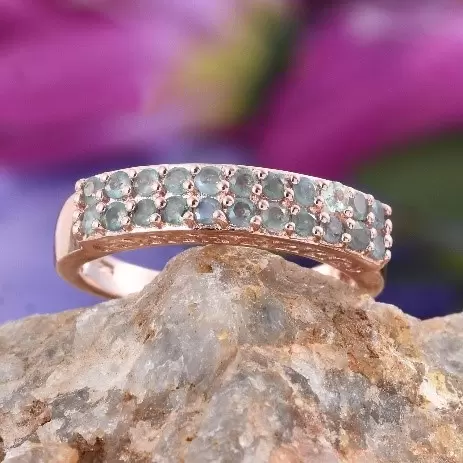
Clarity
The ability for light to pass through a translucent gemstone. When a gemstone is formed, it contains multiple impurities. These impurities are called inclusions and can affect the clarity of a stone. Gemstones with no visible inclusions when view with the naked eye are called "eye clean." Gemstones with no visible inclusions when viewed with a 10X magnifying loop are called "loop clean." Diamond clarity grades rank from "I" for imperfect to "FL" for flawless loop-clean gems. By nature, all diamonds have tiny flaws. The fewer obvious flaws in a diamond, the more valuable the stone is.

Cleavage
Some gemstones have a natural tendency to split along structural planes contained within the crystal. These planes are areas of weakness in the stone and can affect the gemcutter's ability to shape a gem. Diamond is traditionally prized because of its natural lack of cleavage.
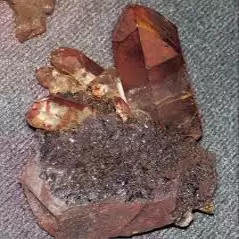
Cloud Inclusion
A grouping of fine bubbles, cavities or material within a gemstone that creates a hazy or cloudy area.

Cluster Setting
Close setting of multiple gemstones to form a cluster or give an illusion of bigger gemstone. Often the same prongs are used to hold multiple gemstones in place.

Clutch Earring Back
A push-back style earring back that slips over an earring's post stud or wire to secure your jewelry. Available in disk wire guard and barrel clutch varieties.
Coating Enhancement
A surface treatment such as the lacquer, enamel, ink, foil, or optical film applied to the surface of the gem to improve appearance, provide color, or add other special effects. Abbreviation: C
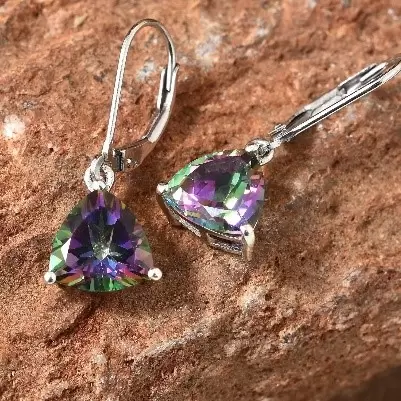
Color
"The color of a gemstone is caused by the absorption and reflection properties of elements and impurities contained within the base mineral. Gemstone colors are considered either idiochromatic, allochromatic or pseudoisochromatic. Idiochromatic coloration is due to the inherent chemical makeup of the mineral. Allochromatic coloration is due to the presence of impurities within a mineral's chemical makeup. Pseudochromatic coloration is caused by surface or subsurface reflective properties of the mineral."

Color saturation
The color of the gemstone is not always evenly saturated throughout a single sample or stone. This is because color saturation is affected by many variable factors present during the formation of the stone like pressure temperature and chemical concentrations. These factors can cause irregularity color banding and zoning as the mineral crystallizes.

Concave Cut
A three-dimensional conical-shaped facet applied to the pavilion of the gem that increases brilliance by giving the appearance of more facets than are actually present. Instead of facets being joined by an angle, they are joined with a groove. This cut enhances the internal glow.
Corundum Gemstone Family
Corundum is a hard and tough crystalline form of aluminum oxide and basic rock-forming mineral. Ruby and sapphire are the two basic varieties of corundum.

Crown
The visible upper part of the stone containing the table facet located above the girdle.
Culet
Refers to the last and smallest facet of the stone located at the bottom tip of the pavilion. This facet is nearly invisible to the naked eye. Its purpose is to protect the tip of the gem from being chipped or damaged.
Cushion Cut
A square cut gemstone with rounded corners and larger facets to increase brilliance. Also known as a pillow cut, European cut, candlelight cut or antique cut. Typically features 64 facets.

Cut
Gemstones can be fashioned into different shapes, depending on the size, shape and physical property of the rough stone. Asscher cut, baguette cut, brilliant cut, cabochon cut, cushion cut, diamond cut, emerald cut, trillion cut, heart cut, radiant cut, mirror cut, princess cut, square cut, step cut and pear cut are some popular cuts in gemstones.
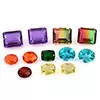
Dangle Earring
An earring which hangs below the earlobe and moves freely.
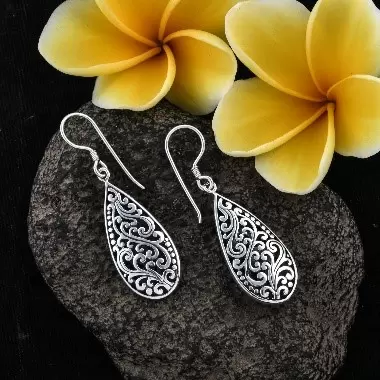
Diffusion Enhancement
A treatment involving the use of chemicals in conjunction with high temperatures to induce color change and/or asterism-producing inclusions. Abbreviation: DF
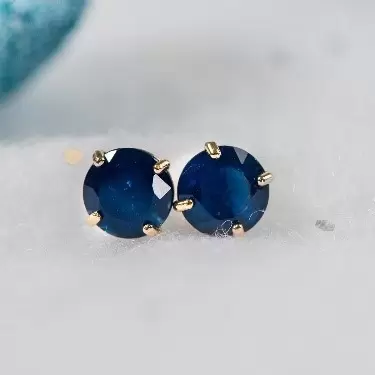
Dispersion
The splitting of light as it enters a gemstone. Also known as a stone's "fire".
Doublet
A stone made of two components, generally held together by a clear or colored adhesive.
Drop Earring
An earring which hangs below the earlobe. The drop is generally an adornment of charm, gemstone or bead that is attached to the base of the earring and has a limited movement.
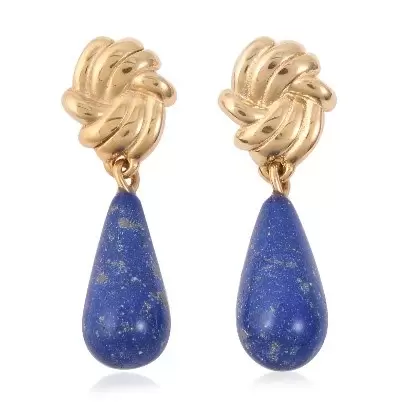
Dyeing Enhancement
A treatment which involves the introduction of dye or coloring agent into a gemstone to give it a new color, intensify the original color or improve color uniformity. Abbreviation: D
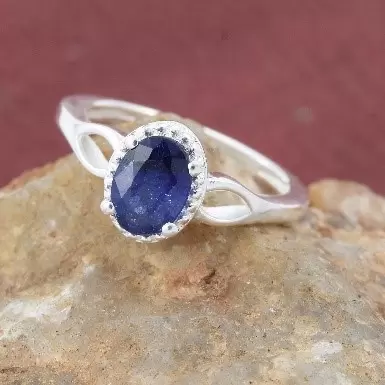
Electroplating
Metallic jewelry can be plated or covered with an alternative metal like gold in a variety of ways, including electroplating. During electroplating, an electrical current is used to bond two metals on a molecular level. Since pure gold is a relatively soft metal, electroplated designs blend the beauty of gold with the strength of an alternative base metal. Gold plating can fade away with time, depending upon how often the item is worn and how thick the plating is.
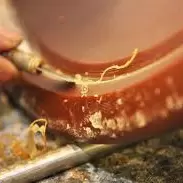
Emerald Cut
And emerald cut gemstone features stepped facets with mitered corners and a rectangular face with rectangular pavilion. The length-width ratio for a classic emerald cut traditionally falls between 1.30- 1.40 with 50 facets.
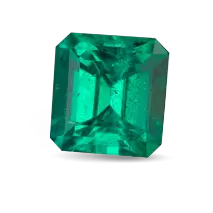
Enamel
Enamel is a decorative technique in which a glass "paste" is applied to the surface of a metal, normally bronze, copper or gold. This glass composition fuses to the metal under very high temperature, creating a vitreous or glass-like decorative surface. The color of the enamel and its degree of transparency depends on metal oxides in the glass and the temperature at which the glass melts and coheres to the surface. Higher temperature produces more durable and translucent enamel and lower temperature produces softer, more opaque enamel. Translucent enamel placed over intricately engraved and patterned metal is a style called guilloché (ghee-YOSH). A solid black, blue or white enamel used to fill engraved designs was especially popular during the mid-Victorian era.
Enhancements
Special treatments, which improve a stone's durability, color or clarity. Some common enhancement techniques are bleaching, coating, diffusion, dyeing, fissure filling, heat, high pressure high temperature impregnation, irradiation, lasering, oiling/resin, infusion plated, polymerization, stabilization and waxing/oiling.
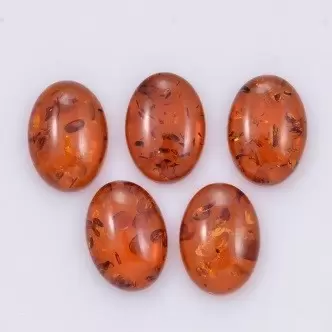
Etching
Removing metal from a surface using acid to create a decorative effect.
Facet
The flat surfaces of a cut gemstone. The largest top facet is referred as the table. A cut's style depends on the shape and arrangement of facets. There are three basic styles of facets. Brilliant cut gemstones have triangular and kite-shape facets in a radial pattern. Step cut gemstones have rectangular facets in a row and mixed cut gemstones have a combination of brilliant and step facets.
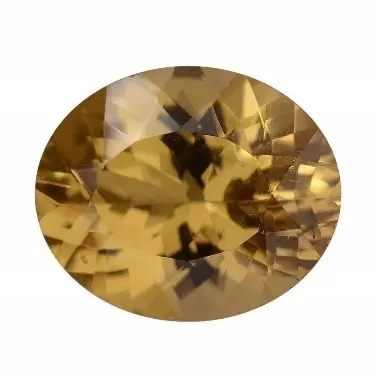
Fancy Cut
Recent advancement in gemstone cutting technology has made it possible to produce breathtaking innovative shapes. Flowers, clover, leaves, stars and kites are some examples of fancy cut.
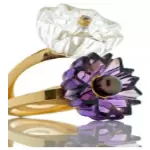
Faux
Faux (sounds like snow) is a French word used to describe something made to resemble something else. The word means fake, imitation or artificial.
Feather Inclusion
A fissure within a gemstone that resembles the barbs of a feather, usually created during the formation of the stone. Feather inclusions can be highly reflective, colored, colorless or transparent.

Feldspar Gemstone Family
Feldspar is a non-metallic mineral with a vitreous luster that breaks on distinct planes. Feldspar produces two main subgroups of gem-quality material: Potassium and plagioclases. Among the well-known gemstones of the feldspar family are moonstone, orthoclase, amazonite, andesine, labradorite and sunstone.
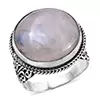
Figaro Chain
A popular chain design in which the links of the chain alternate between one elongated oval and two or three circular links.
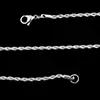
Figure Eight Safety Catch
A safety catch shaped like a figure eight which snaps over a pin to secure your jewelry.
Filigree
Fine metal work using tiny beads and twisted threads soldered onto an object of the same metal to produce intricate patterns.
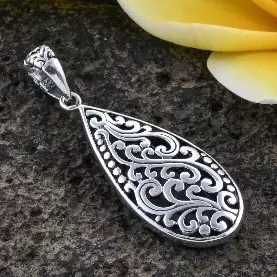
Fingerprint Inclusion
An internal characteristic of a gemstone that is made up of a network of fluid-filled tubes in a pattern that resembles human fingerprints. Typically found in sapphire and ruby.

Fissure Filling
The filling of surface-breaking cavities or fissures with colorless glass, plastic, solidified borax or similar substances. This treatment improves durability and appearance. Occasionally, this adds weight. Abbreviation: FF
Fob
A short chain with a decorative seal or other device attached to the end. The fob and chain hung outside a pocket watch could be used to pull the watch out of the pocket.
Four Cs
Representing carat (weight), clarity, color and cut to analyze the quality of gemstone or diamond.
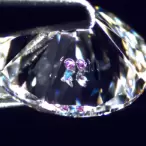
Full Cut
A round-shaped, brilliant-cut gemstone with small proportions.
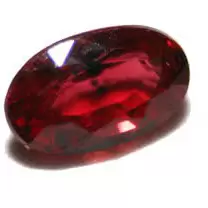
Four-Prong
The most commonly used setting, this secure setting uses four contact points, allowing maximum light exposure to the sides and bottom of the gemstone.
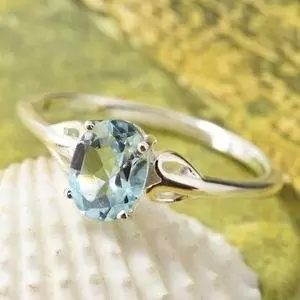
Garnet Gemstone Family
Garnets are a group of silicate minerals. Almandine, Andradite, Grossular, Pyrope, Spessartine and Uvarovite are different varieties of garnet. The varies differ on the basis of their chemical composition.
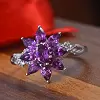
Gemstone
The term gemstone is used for any mineral or organic material used for personal adornment, display or object of art. From thousands of minerals found on earth, only a few possess the three primary qualities as beauty, durability and rarity which denote gemstones.
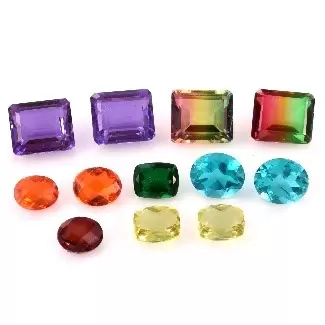
Geode
A hollow rock cavity usually containing one or more gems. Two excellent examples of gems often found in geodes are amethyst and peridot.

Gilt
A thin gold plating.
Girdle
The widest part of the cut stone that divides the visible upper crown of the stone from the lower pavilion.
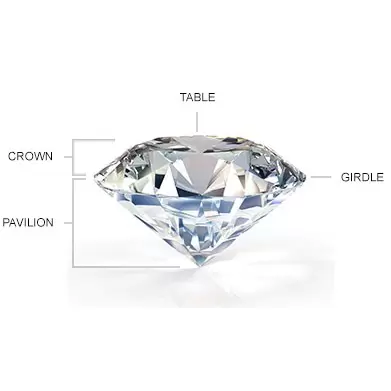
Gold Plate
A layer of gold applied to base metal. Gold must be a minimum of 10K fineness. Measures a minimum of one-half micron in thickness.

Gold Overlay
A material layered with 10K or finer gold. This plating must be 1/20 of the total metal weight. If not, the actual percentage must be listed. May also be called “gold filled” or “rolled gold plate.”
Gold Tone
A base metal coated with a layer of gold-coloring thick enough to provide a durable coating.
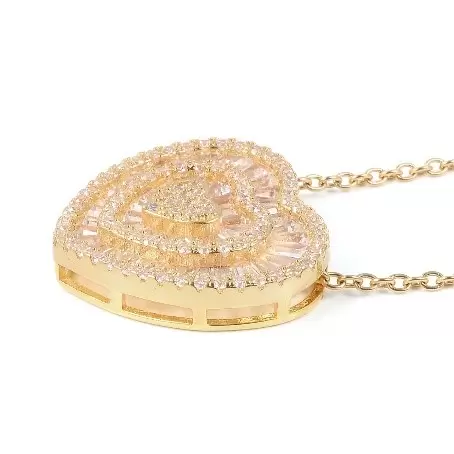
Gold Washed
Gold washed describes products that have an extremely thin electroplating of 10K fineness gold or better that is less than 0.175 microns thick.
Gold-Filled
Gold-filled, also known as rolled gold, is a technique where a sheet of 10K or finer gold is applied to the surface of a base metal using heat and pressure. Gold-filled pieces must be at least 1/20 by total metal weight.
Gram
In jewelry, gram is the term used for denoting the weight of precious metals like gold and silver.
Heart Cut
A heart shaped gemstone is essentially a pear-cut stone with a cleft at the top. This cut possesses a nearly round pavilion. The heart cut gemstone’s length-to-width ratio is typically 1:1 with 59 facets.
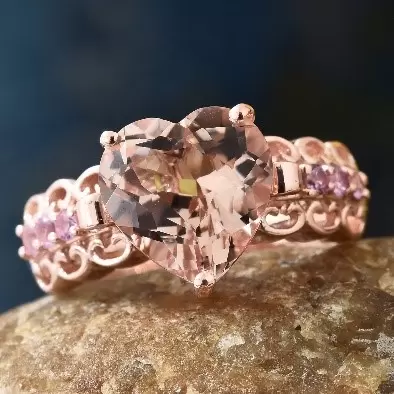
Heating
This treatment is used to alter the color or clarity of a gemstone by prolonged exposure to high heat. Abbreviation: H

High Pressure High Temperature
This treatment uses heat and pressure, the color, clarity and/or phenomenon of a gemstone is altered. Abbreviation: HPHT
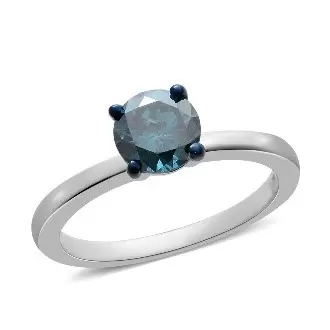
Impregnation
This treatment uses the impregnation of a porous gemstone with a colorless agent such as resin is undertaken to improve the durability and appearance. Abbreviation: I
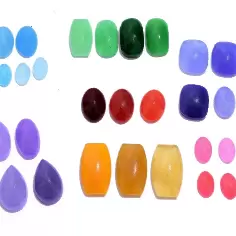
Inclusion
Naturally occurring variant within a gemstone, otherwise known as an impurity. Some examples are bubble inclusion, cloud inclusion, feather inclusion, needle inclusion, fingerprint inclusion, and silk inclusion.

Intaglio
The art of carving a shell or similar matter beneath its background. An intaglio is the opposite of a cameo.
Iridescence
The play of colors seen within a gemstone as a result of inclusions interfering with light entering the stone.
Irradiation
A treatment using neutrons, gamma rays or beta particles (high energy electrons) to alter a gemstone's color. The irradiation may be followed by a heating treatment. Abbreviation: IR
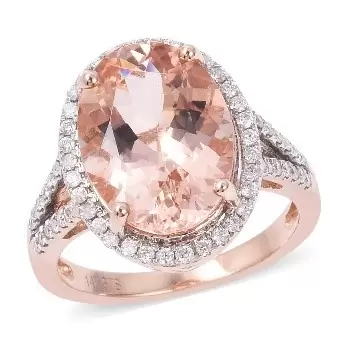
Jade Gemstone Family
Jade is an ornamental metamorphic stone made up of different silicate minerals. The name jade has been used to describe both of its variations: jadeite and nephrite.
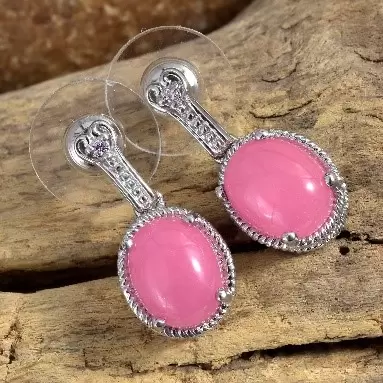
Jump Ring
A small wire ring, not soldered, used to link elements of jewelry.
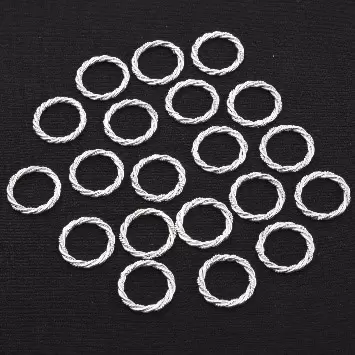
Karat
Unit of measurement indicating the quantity of fine gold in a piece of jewelry. Measured in 24 parts. For example, 18 karat gold contains 18 parts fine gold and six parts other metal alloys.
Lasering
A treatment using a laser and chemicals to reach and alter inclusions in gemstones, usually diamonds. Abbreviation: L
Lapidary
One who cuts and polishes gems to their finished state.
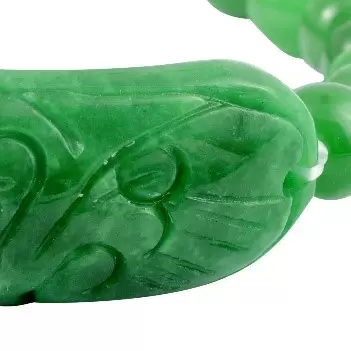
Luster
The outward appearance of a gem or organic material.

Loupe
A compact magnifying glass used to examine stones and settings. The average loupe magnifies an object up to 10 times.
Marquise Cut
A brilliant cut on an elliptical or oval-shaped stone, which tapers to a point at both ends. It is sometimes called a navette cut. A stone cut in a boat shape, pointed at both ends with rounded sides can also be considered as marquise cut stone. The recommended length-to-width ratio for this cut is 1.75 to 2.25 with 57 facets. Pronounced "Mar-KEYS".
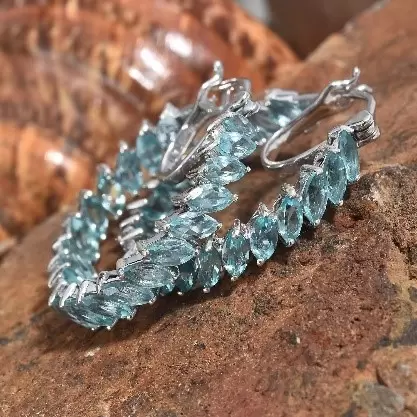
Mineral
An inorganic element of Earth with consistent atomic structure and chemical composition.
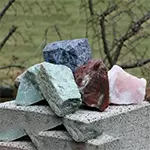
Mirror Cut
A round cut gemstone that features an extraordinarily large table and thick girdle consisting of up to 90-percent of the width of the gem. This increases the stone's reflective ability mimicking that of a mirror.
Mixed Cut
A gemstone cut featuring a combination of both brilliant and step facets.

Mohs Hardness Scale
The Mohs hardness scale is a universally used ranking system for distinguishing minerals. Minerals are ranked one to ten with one (talc) being the softest and ten (diamond) being the hardest.
Mother-of-Pearl
The substance that lines inside the oyster or other mollusk.
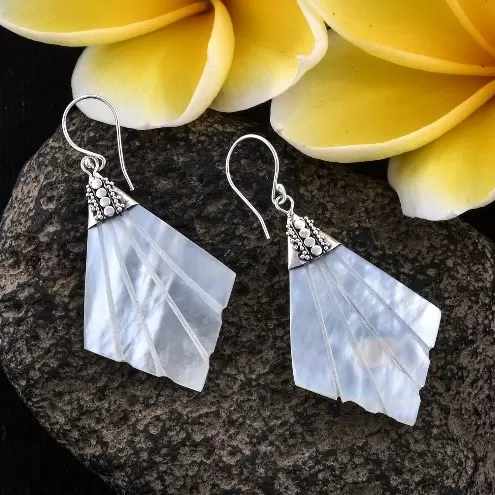
Mollusk
Mollusk refers to invertebrate animals such as clams and snails. These species have a soft body and no backbone. They usually live within a shell. Mollusks are a source of pearls and mother-of-pearl.
Navette Cut
A crystal inclusion shaped like long thin needles. Occasionally, these can align in opaque stones to produce optical effects like asterism and chatoyancy.

Needle Inclusion
A crystal inclusion shaped like long thin needles. Occasionally, these can align in opaque stones to produce optical effects like asterism and chatoyancy.
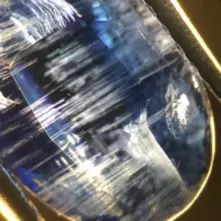
Nickel silver
A white metal mixture made of copper, zinc and nickel.
Octagon Cut
A step cut gem with four mitered corners. This cut is differentiated from an emerald cut by presenting steps on the pavilion that are not equidistant. The facets run in steps parallel to the gemstone circumference and typically features 53 facets.

Oiling/Resin Infusion Enhancement
The filling of surface-breaking fissures with a colorless substance like oil, wax or resin to improve the gemstone's appearance. Does not include glass or plastic fillers. Abbreviation: O
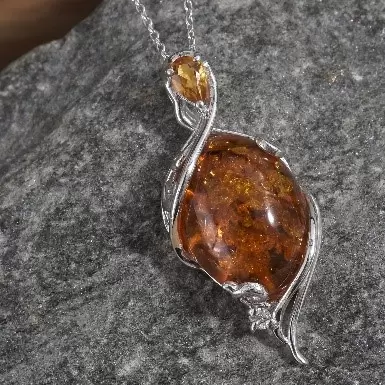
Opal Gemstone Family
Opal is a hydrated amorphous form of silica, available in two main varieties: common opal and precious opal. The precious opal group includes white opal, black opal, fire opal and boulder opal.
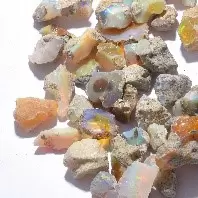
Opalescence
Opalescence is primarily used to describe iridescence in a gemstone. Though named for opal, this should not be confused with “play-of-color,” which describes the phenomenon seen in many opals.
Organic Gem
Gemstones that are formed through biological process with organisms like animals and plants. For example, cultured pearl, amber and ammolite are all organic gemstones.
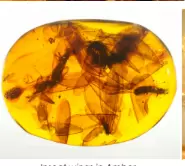
Patina
Patina refers to the change in an object's surface due to natural aging. In bronze sculptures, patina specifically refers to the surface of the bronze altered by the sculptor with acid or the application of other chemicals.
Pavé Setting
A tight grouping of identically sized stones laid across a flat or convex surface. The stones are held in place using three to six raised beads per stone.
Pavilion
The bottom faceted area of a cut gemstone located below the girdle, usually covered by the setting.
Pear Cut
Shaped like a teardrop, a pear cut gemstone is generally one that is well cut with a polished girdle. With dramatic color display, this cut typically features 58 facets.

Pleochroism
Pleochroism refers to a feature of gemstone when it displays different colors as viewed from different angles.
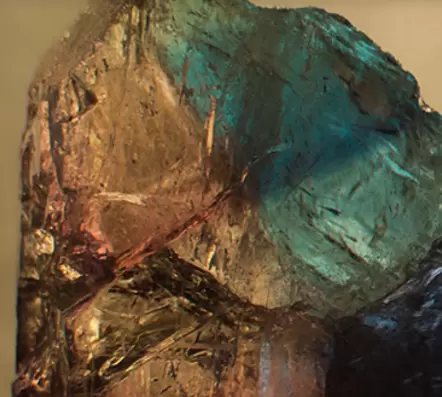
Polymorph
A polymorphic gemstone shares the same chemical composition with another gem or mineral but takes a different form based on its crystal structure. Occasionally, a polymorph can be converted to another gem or mineral with heat or pressure.
Princess Cut
Also known as a modified brilliant cut, the princess cut is a square version of the round brilliant cut, typically with 76 facets. This cut requires more weight to be directed toward the gem's depth in order to maximize brilliance.
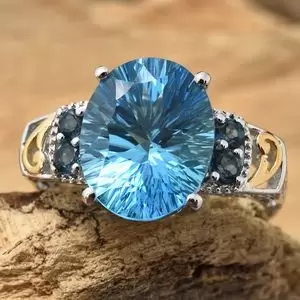
Prong
The most common setting, a prong setting uses the least amount of metal to secure a gemstone allowing more of the stone to be exposed to light. Stones are set with two or more individual prongs securing them into place.
Quartz Gemstone Family
One of the most prolific gemstone families, quartz makes up close to 12 percent of the earth's crust and occurs in a variety of igneous metamorphic and sedimentary rocks. Examples of quartz include amethyst, citrine, and jasper.
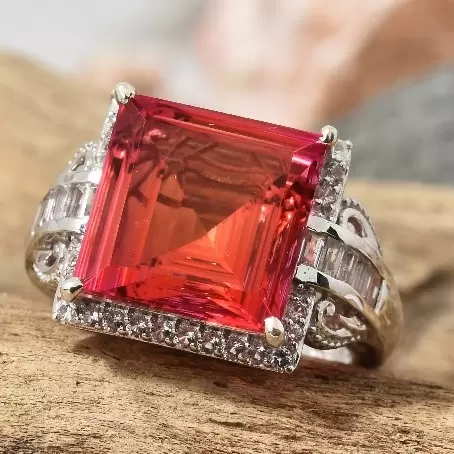
Refraction
The bending of light as it enters a stone and the surface slows down the light display.
Rhodium
Rhodium is part of the platinum metal family. Silver, gold and other base metals were frequently rhodium plated during the 30s and 40s for a white shiny look. Genuine rhodium in its raw state is a liquid.
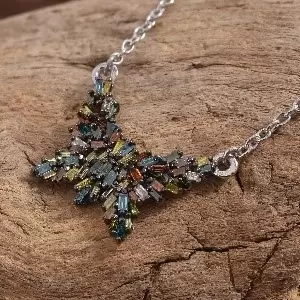
Rough
The raw or natural state in which gemstones are found.
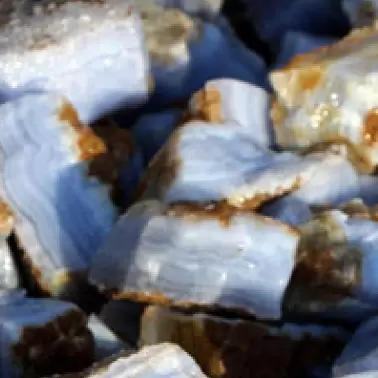
Safety Catch
Prior to the 1900s, brooches had a simple catch with no locking mechanism. The pin would often extend beyond the catch far enough to weave back into clothing for security. The safety catch includes a locking mechanism to help keep the jewelry in place, and protect the wearer from the pin.
Shaving
A cut made across the table of a gemstone. This cut changes the appearance making it look as a higher carat weight stone.
Synthetic
Gems made in laboratories with an identical chemical composition to a gemstone that comes from the earth.
Silk
Refers to a grouping of needle-like inclusions within the stone, which intersect each other and shine like silk.
Silver Tone
A silver coated metal that is not solid sterling silver.
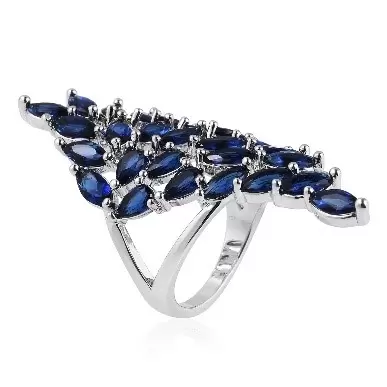
Single
A specialized cut gemstone with seventeen or less facets.
Square Cut
A square cut gemstone with equal sides, similar to a princess cut. Typically, with 57 step cut facets parallel to the edges in the manner of a pyramid with its top chopped off.
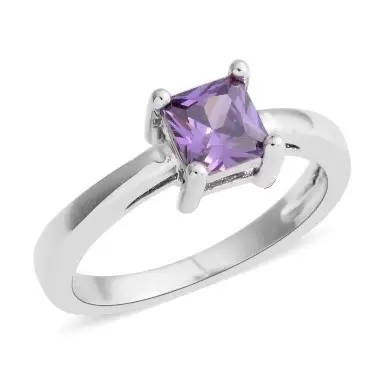
Stabilization
A method to strengthen a gemstone and retain its natural color by mixing gemstone material and clear resin or a bonding agent into a porous material. Stabilization is not a color enhancement. Abbreviation: S
Step Cut
In this cut, facets are rectangular or more precisely trapezoidal and they're arranged in rows that look like flight of stairs.
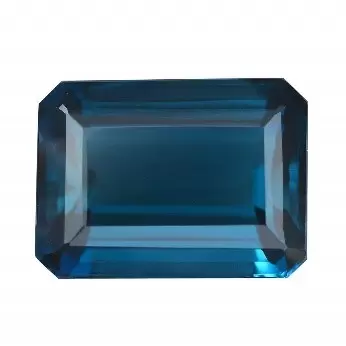
Sterling Silver
Sterling silver is an alloy of 92.5% pure silver and 7.5% other metals, usually copper. Sterling silver is harder than pure silver and has a lower melting point than pure silver and pure copper. This is a legal standard that requires stamping for identification.
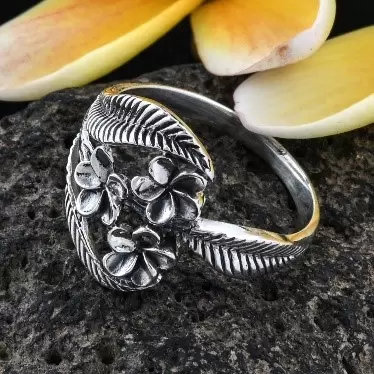
Table
Table refers to the largest flat surface on the top of a cut gemstone.
Tension Setting
In a tension setting, the metal is spread apart and the girdle of the stone is settled into small grooves carved into the inside surface of the metal. Tension settings are only appropriate for high density gemstones with Mohs scale of hardness rankings of 9 or 10.
TDiaWt
Denotes Total Diamond Weight which is the total of the carat weight of all the diamonds studded in the jewelry. This is an approximate weight based on the average carat weight of all the diamonds used in the production of an entire batch of these pieces, and therefore each piece of jewelry may vary (+/-) in total diamond weight.
TGW
Denotes Total Gem Weight, which is the total of the carat weight of all the gems, including diamonds, in the jewelry. This is an approximate weight based on the average carat weight of all the gems used in the production of an entire batch of these pieces, and therefore each piece of jewelry may vary (+/-) in total gem weight.
Trillion Cut
A triangular cut, usually with truncated corners and displaying a variety of facet designs. This polyhedron typically features 43 facets creating a spectacular wedge of brilliance.
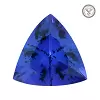
Waxing/Oiling
A treatment involving the infusion of a colorless wax paraffin or oil into porous, opaque or translucent gemstones to improve their appearance. Abbreviation: W
